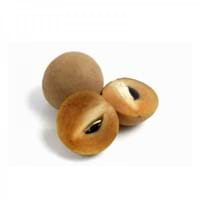Health Benefits
Anti-inflammatory properties, Arthritis treatment, Regulates Blood Sugar, Unknown
Anti depressant, Anti-inflammatory properties, Healthy mucus membrane, prevents oral cavity cancer, Prevents anemia, Prevents cases of morning sickness, Prevents lung cancer, Skin rejuvenation, Treatment of colonic diseases
General Benefits
Boosts immune system, Controls blood sugar levels, Digestive aid
Anti oxidant properties, Anti-inflammatory properties, Digestive aid, Gives you energy, Suppresses Arthritis
Skin Benefits
Nourishes skin, Protects skin from oxidative stress
Reduces wrinkles, Skin rejuvenation
Hair Benefits
Prevents hair loss, Promotes longer and healthier hair, Regulates hair growth
Not Available
Allergy Symptoms
Asthma, Red rash, Swelling of mouth, tongue or lips
Itching, Swelling of mouth, tongue or lips, Tingling sensation in mouth
Side Effects
Diarrhoea, Vomiting
Mouth irritation, Weight gain
Best Time to Eat
As a snack in the late afternoon
As a snack in the late afternoon
Vitamin B5 (Pantothenic Acid)
Vitamin C (Ascorbic Acid)
Calories in Fresh Fruit with Peel
Calories in Fresh Fruit without Peel
Not Available
Not Available
Calories in Frozen Form
Not Available
Calories in Dried Form
Not Available
Calories in Canned Form
Not Available
Calories in Juice
Not Available
Calories in Pie
Not Available
Type
Berry
Tree fruit, Tropical
Season
Winter
Mid to late summer
Varieties
Bush Table Queen, Heirloom Table Queen, Festival Hybrid, Early Acorn Hybrid, Table Ace, Ebony and Cream of the Crop
Chompoo Longan, Kohala Seedling, Haew, Edau and Biew Kiew
Seedless Variety
Not Available
Not Available
Color
Dark green, Green-yellow, Orange green
Rusty brown
Inside Color
Not Available
Yellowish brown
Origin
Central America, North America, Unknown
Mexico
Soil Type
Well-drained
Well-drained
Climatic Conditions
Cold, Sunny
Sunny, Warm, Without frosts
Facts about
- It was named as Acorn Squash for its resemblance to a large ribbed acorn.
- It is said that squash was being grown in Mexico as long as 10,000 years ago.
- It was the first food cultivated by native American Indians.
- Longan is also called as "Dragon's eye" in China as it gives an impression of an eyeball.
- Longan seeds can be used to absorb the venom after the snake bite and they also help to stop bleeding.
Spirits
Not Available
Yes
Cocktails
Not Available
Yes
Top Producer
China
Thailand
Other Countries
Egypt, India, Iran, Italy, Mexico, Russia, Turkey, Ukraine, United States of America
Australia, Combodia, Taiwan, United States of America, Vietnam
Top Exporter
India
Thailand
Botanical Name
Cucurbita Pepo
Dimocarpus longan
Synonym
Winter Squash
Dragon eye
Subkingdom
Tracheobionta
Viridiplantae
Division
Magnoliophyta
Tracheophyta
Class
Magnoliopsida
Magnoliopsida
Subclass
Dillenhidae
Rosidae
Order
Cucurbitales
Sapindales
Family
Cucurbitaceae
Sapindaceae
Genus
Cucurbita
Dimocarpus
Generic Group
Not Available
Not Available
Difference Between Sapota and Longan
We might think that Sapota and Longan are similar with respect to nutritional value and health benefits. But the nutrient content of both fruits is different. Sapota and Longan Facts such as their taste, shape, color, and size are also distinct. The difference between Sapota and Longan is explained here.
The amount of calories in 100 gm of fresh Sapota and Longan with peel is 40.00 kcal and 83.00 kcal and the amount of calories without peel is Not Available and Not Available respectively. Thus, Sapota and Longan belong to and category.These fruits might or might not differ with respect to their scientific classification. The order of Sapota and Longan is Cucurbitales and Sapindales respectively. Sapota belongs to Cucurbitaceae family and Longan belongs to Sapindaceae family. Sapota belongs to Cucurbita genus of Pepo species and Longan belongs to Dimocarpus genus of D. longan species. Beings plants, both fruits belong to Plantae Kingdom.









